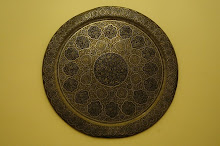
Margaret George, an Iraqi Assyrian Christian, joined the Kurdish resistance movement in Northern Iraq in 1961 at the age of 20. One of the first female rebels in the history of the Kurdish resistance, she quickly asserted herself as a capable fighter, commanding at the head of an otherwise all-male unit.
Within just a few years she became a legendary hero figure whose military exploits, bravery and leadership in the isolated mountain passes of Northern Iraq echoed throughout all of Kurdistan. Iraqi Kurdish leaders deftly transformed her into a local version of Joan of Arc and handed out portraits of her to the peshmerga rank-and-file who carried her photos into battle in the manner of a talisman.
“Margaret liked people to buy photographs so they knew she was a peshmerga and so that other women would go to the mountains like her,” says Zaher Rashid, George’s portraitist, who photographed her at his studio in the town of Qala Diza, near the border with Iran.
Accounts of Margaret’s life - and death - are sketchy at best. Depending on which version you believe, she is said to have met her end in 1969, after many difficult battles, either at the hands of a jealous lover, or the rebel Kurd leadership, the latter of which viewed her popularity and Assyrian nationalism as a threat to their interests and designs.
To this day, Margaret George remains famous among Assyrians and Kurds and some Kurdish fighters still carry photographs of her.
The photos included here are those of Zaher Rashid published in Susan Meiselas’ Kurdistan: In the Shadow of History.

















